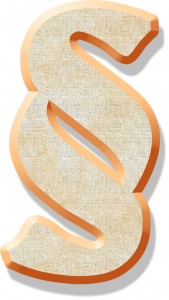The decisions of the U.S. Supreme Court not only shape the law of the nation, but can often adjust the weave of our social fabric. To help the justices meet this weighty challenge, the Rules lay out a merits-stage process that offers sources beyond the arguments in the parties’ briefs, to provide information to the Court that is both comprehensive and concise.
 The Joint Appendix
The Joint Appendix
The Joint Appendix is a compilation of materials from the record below. The JA is intended to be a useful guide for the justices as they consider the arguments in the case, and is not the sole reference source for the Court, which will have access to the entire record below. The parties are encouraged to confer on the content of the JA, but Rule 26.2 provides a document designation scheme if the parties are unable to agree. The petitioner is expected to pay the initial costs of preparing the JA—which, like all Supreme Court merits-stage filings, must be typeset to the Supreme Court’s exacting format—but Rule 26.3 requires the respondent to advance costs for documents that the petitioner deems unnecessary, and further, generally provides that the JA expenses are a taxable cost at the conclusion of the case. The Court can also assign JA costs as it deems appropriate. The parties might defer filing of the JA, or even be excused entirely, upon a granted motion to the Court. The cover is tan, includes both the petitioner’s and the respondent’s signature blocks, and indicates the date the petitioner filed the Petition, as well as the date the Court granted the writ.
The JA should be filed with the Petitioner’s Brief, 45 days after the Court grants the writ, however the petitioner can ask the Court for an extension of time.
Amicus Briefs
Amici can file briefs supporting either party, or neither party (an amicus supporting neither party will have the same filing deadline and cover color as an amicus supporting the petitioner). Amicus briefs are due seven days after the party being supported files its principal brief. Important note for Supreme Court merits-stage parties: litigants should avoid filing a party’s principle brief before the due date; amici in support will have scheduled their filing date for seven days after the party’s due date, and may not be able to meet a shortened filing period. Briefs supporting the petitioner are clad in a light green cover, and briefs supporting the respondent are in dark green. Supreme Court merits-stage amicus briefs are limited to 9,000 words.
The Supreme Court Merits Rule
While the U.S. Supreme Court only allows filing by paper document, all filers at the merits stage must send the Clerk a text-searchable PDF copy of the brief on the day of filing. The Court’s memo detailing the Supreme Court Merits Rule provides a specific naming convention for the PDF file, depending on the identity of the filer. The filer must send a copy to every party’s counsel of record, but this does not replace the paper service requirement. Filers are not required to serve amici who have filed in the case, but if the Solicitor General has filed an amicus brief on behalf of the government, we recommend sending the SG a courtesy copy.
With over 90 years of brief filing experience, Cockle Legal Briefs can help you navigate both the written and unwritten rules of Supreme Court merits-stage practice. Give us call to schedule your next Supreme Court filing.